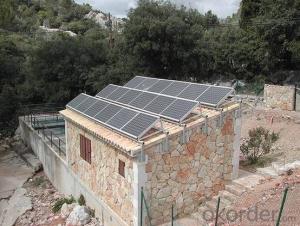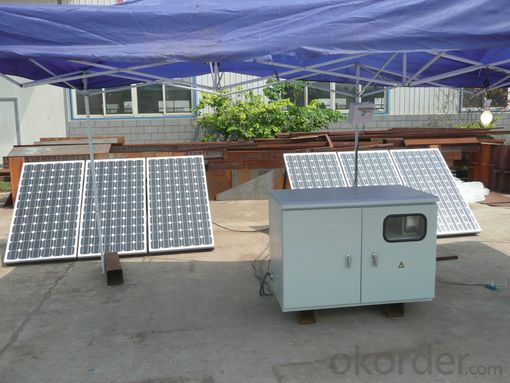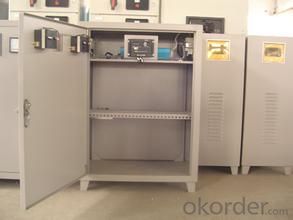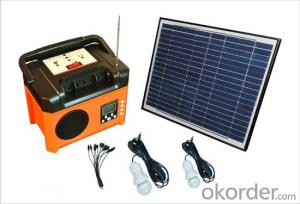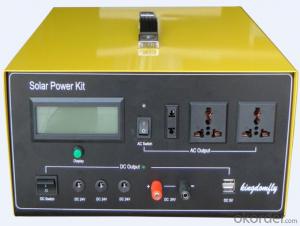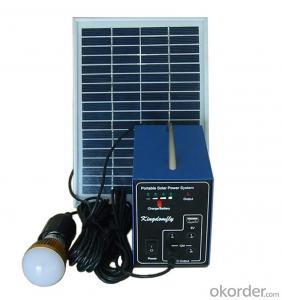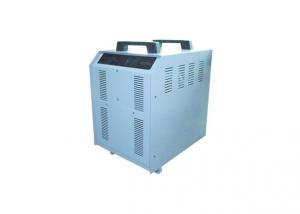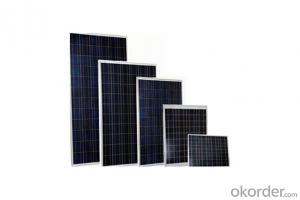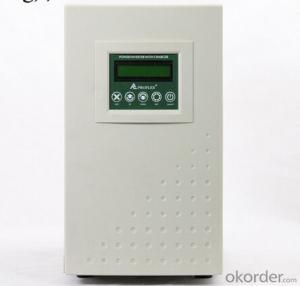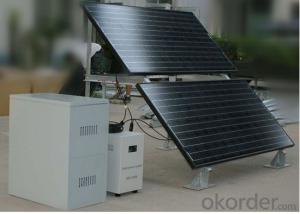Off Grid Solar Energy Systems:Home Off-Grid Power Solutions
- Loading Port:
- Shanghai
- Payment Terms:
- TT or LC
- Min Order Qty:
- 1000 watt
- Supply Capability:
- 200000 watt/month
OKorder Service Pledge
OKorder Financial Service
You Might Also Like
Anern Advantage:
1) Over 10 year experience in clean energy line, business covering solar street light, solar garden light, off grid
solar system and on grid solar power system, etc;
2) Exporting for worldwide, with satisfied clients more than 50 countries;
3) Competitive price, excellent service, integrated certificate system;
Obtain Obvious Advantages, Provide Best Price, Welcome to Talk More.
Solar system advantages:
1. CE, ROHS approved.
2. High conversion efficiency, high-transmission rate.
3. Energy saving, environmental-friendly.
4. Advanced technology, strict quality control system.
5. Easy installation, safe operation, free maintenance.
6. Low MOQ, fast delivery time, long service life.
System Device | |
| No | Device name |
| 1 | solar panels |
| 2 | inverter( off grid and on grid) |
| 3 | mounting system |
| 4 | combiner box |
| 5 | cable and other accessories |
| Quick Details | |||||
| Specification: | Mini | Application: | Home | Output Voltage (V): | 72V |
| Load Power (W): | 3.5-4.2KW | Solar Power (W): | 2KW | Work Time (h): | 4-5days |
| Packaging & Delivery | |
| Packaging Detail: | carton pallet |
| Delivery Detail: | within 7 days |
| Specifications | |||||
| 2KW Solar Power System | |||||
| Lifespan >20 years | |||||
| Designed to meet the needs for low power household appliances | |||||
| Base on your situaion ,we design the solar power system as following : | |||||
| 1: PV-system DC voltage level: DC 48V ,ouput AC voltage level: AC220V 50/60HZ | |||||
| 2: load Working time every day: 840W 5hours(3.5-4.2KW*h/day) | |||||
| 3: Primise rainy days: 2 days | |||||
| 4:PV system power Max Input Power: 2KW/DC72V Max AC Output Power: 2000W AC220V 50/60HZ,opration output power:inductive load <=1KW Resistive load:1.6KW | |||||
| 5: PV Array specification: Voc:DC86.4V Vmp:72V Isc:30A Imp:27.8A |
| Name | Type | Number | Remarks |
| MONO-Solar panel | JX200M/36V 1580*808*35mm | 10 | 2KW connection: 2 Series, 5 In parallel |
| Battery | 12V200Ah | 8 | Gel batteries The total capacity:DC48V/400Ah |
| PV-inverter | JX-2KW | 1 | inputDC48V -outputAC220V 50/60HZ,city power automatic switch |
| PV support | JX-S200-10 | 1 | 10 Pcs solar panels use a PV support , Material: Hot -dip galvanized |
| Battery box | JX-C24 | 1 | size:780*800*900mm 4layerdetachable type |
| PV Controller | CM4860 | 1 | DC48V 60A , RS485 communication function |
| PV cable,connect bettwen | PV-1*4.0mm2 | 100 | PV -specific single-core copper 4.0 mm2 cable,Double protection cover 100M |
| Power cable | BVV-1*16mm2 | 50 | single-core copper 16 mm2 cable,Double protection cover |

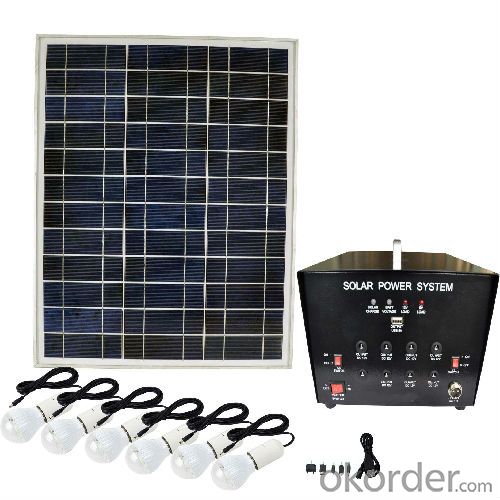

FAQ
1, What’s price per product ?
A: It’s depends on the quantity, delivery date and payment terms of the order. We can talk further about the detail price issue. Our products is high quality with lower price level.
2, How to make payment?
We accept T/T or L/C.
3, What is your lead time?
Generally 1-5 weeks depends on the order quantity and your specific requirements.
4, Can you do OEM for us?
Yes, we can.
5, How do you pack your products?
We have rich experience on how to pack the panels to make sure the safety on shipment when it arrives at the destination.
- Q: Can solar energy systems be used in urban areas?
- Yes, solar energy systems can be used in urban areas. In fact, urban areas provide several advantages for solar energy systems, including available rooftops and vertical surfaces for solar panel installation, a dense population that can benefit from renewable energy, and reduced transmission losses due to shorter distances between energy generation and consumption. Additionally, advancements in solar technology have made it possible to integrate solar panels into various urban infrastructure, such as streetlights, bus shelters, and building facades, making solar energy systems a viable and sustainable solution in urban environments.
- Q: Can solar energy systems be used in areas prone to hurricanes or earthquakes?
- Solar energy systems can be used in areas prone to hurricanes or earthquakes, but they need to be designed and installed with these risks in mind. Proper engineering and construction measures, such as reinforced mounting structures and impact-resistant panels, can help ensure the systems can withstand the strong winds and potential debris from hurricanes. Similarly, earthquake-resistant designs and secure anchoring methods can be employed to mitigate the risks posed by seismic activities. However, it is essential to consult with experts and adhere to local building codes and regulations to ensure the safety and resilience of solar energy systems in such areas.
- Q: Can solar energy systems be used for powering electric vehicle rental services?
- Yes, solar energy systems can be used to power electric vehicle rental services. Solar panels can generate electricity which can be stored in batteries or directly used to charge electric vehicles. This renewable energy source can provide a sustainable and cost-effective way to power electric vehicles in rental services, reducing carbon emissions and promoting clean transportation solutions.
- Q: Can solar energy systems be used for powering off-grid educational institutions?
- Yes, solar energy systems can be used for powering off-grid educational institutions. Solar panels can be installed on the roofs or grounds of the institutions to harness sunlight and convert it into electricity. This renewable energy source can provide a reliable and sustainable power supply, especially in remote areas where grid connectivity is limited or unavailable. Solar energy systems can effectively meet the energy demands of educational institutions, powering classrooms, lighting, computers, and other equipment. Additionally, it promotes environmental sustainability and reduces reliance on fossil fuels, making it a suitable option for off-grid educational institutions.
- Q: How much does it cost to install a solar energy system?
- The cost to install a solar energy system can vary depending on several factors such as the size of the system, location, type of panels, and installation complexity. On average, a residential solar energy system can range from $10,000 to $30,000 after considering incentives and rebates. It is recommended to get multiple quotes from reputable solar providers to determine the specific cost for your individual needs.
- Q: What is concentrated solar power (CSP)?
- Concentrated solar power (CSP) is a renewable energy technology that uses mirrors or lenses to concentrate sunlight onto a small area, typically a receiver or a solar tower. This concentrated sunlight produces heat, which is then used to generate electricity through steam turbines or other heat engines. CSP systems can store energy for later use, making it a reliable and efficient source of power.
- Q: What is the lifespan of a solar energy system?
- The lifespan of a solar energy system typically ranges from 25 to 30 years, but with proper maintenance, it can last even longer.
- Q: Can solar energy systems be used in areas with limited access to solar tracking systems?
- Yes, solar energy systems can still be used in areas with limited access to solar tracking systems. While solar tracking systems can optimize the efficiency of solar panels by following the sun's path throughout the day, they are not essential for the basic operation of solar energy systems. Fixed solar panels can still generate electricity from sunlight, albeit at a slightly reduced efficiency compared to tracking systems. Therefore, even in areas with limited access to solar tracking systems, solar energy can still be harnessed and utilized effectively.
- Q: Can solar energy systems be used for powering off-grid islands?
- Yes, solar energy systems can be effectively used for powering off-grid islands. Solar panels can be installed on the island to harness sunlight and convert it into electricity, which can then be stored in batteries for use during nighttime or cloudy days. This provides a reliable and sustainable source of energy, reducing dependence on fossil fuels and minimizing environmental impact.
- Q: Can solar energy systems be used in powering retirement homes or assisted living facilities?
- Yes, solar energy systems can certainly be used to power retirement homes or assisted living facilities. In fact, solar energy can be a highly beneficial and cost-effective solution for these types of facilities. Retirement homes and assisted living facilities have a high energy demand due to the need for heating, cooling, lighting, and various electrical appliances. By installing solar panels on the rooftops or in suitable areas, these facilities can generate their own electricity and reduce their reliance on the grid. Solar energy systems can help these facilities reduce their operating costs significantly, as they can offset a considerable portion of their electricity bills. This is especially important for retirement homes and assisted living facilities, as they often operate on tight budgets and need to allocate resources efficiently. By harnessing solar power, these facilities can redirect the saved funds towards providing better care and services for their residents. Furthermore, solar energy systems contribute to a cleaner and greener environment. Retirement homes and assisted living facilities have a responsibility towards their residents' well-being, and by using solar power, they can reduce their carbon footprint and promote sustainability. This can have a positive impact on the health and overall quality of life for the residents. Additionally, solar energy systems can provide a reliable source of power during emergencies or power outages. Particularly in areas prone to extreme weather events, where power disruptions are more common, having a solar energy system with battery storage can ensure continuous and uninterrupted power supply to critical areas such as medical equipment, lighting, and HVAC systems. In conclusion, solar energy systems are a viable and beneficial option for powering retirement homes or assisted living facilities. They can significantly reduce operating costs, promote sustainability, and provide a reliable source of power, ultimately improving the quality of care and services provided to residents.
Send your message to us
Off Grid Solar Energy Systems:Home Off-Grid Power Solutions
- Loading Port:
- Shanghai
- Payment Terms:
- TT or LC
- Min Order Qty:
- 1000 watt
- Supply Capability:
- 200000 watt/month
OKorder Service Pledge
OKorder Financial Service
Similar products
Hot products
Hot Searches
Related keywords
